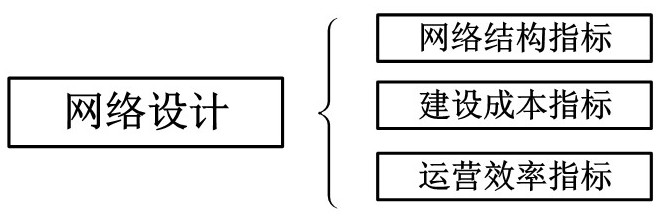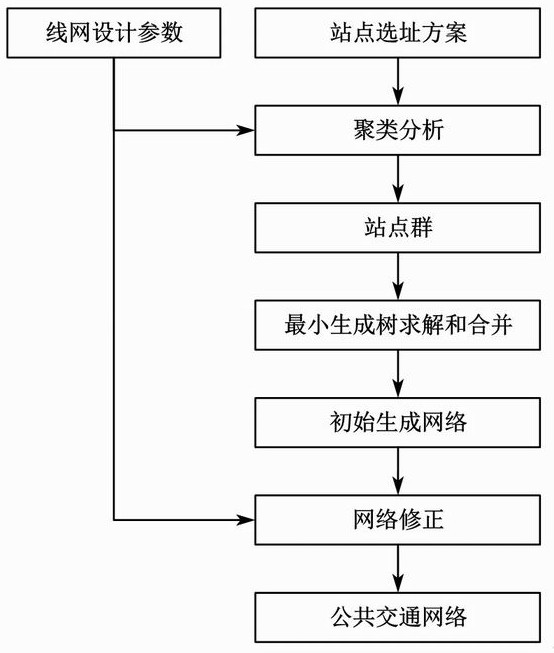A method for automatic generation of large-scale urban rail networks based on land use
An automatic generation, urban rail technology, applied in the direction of constraint-based CAD, character and pattern recognition, special data processing applications, etc., can solve the large passenger flow and operation pressure of the transfer station, without considering the urban expansion, the old network planning scheme city Insufficient development support and other issues to achieve the effect of reducing computing costs
- Summary
- Abstract
- Description
- Claims
- Application Information
AI Technical Summary
Problems solved by technology
Method used
Image
Examples
Embodiment
[0183] as attached Figure 13 , considering the stations corresponding to the rail transit network in a certain area, the number of stations is 228, and the current total mileage is about 508.28km. The expected shape of the network is a mixed radial rail transit network, without obvious ring lines, and the network is formed in the central area and linearly arranged in the peripheral area.
[0184] Since the expected shape of the line network is a mixed radial rail transit network, the K-Means clustering algorithm is used to cluster the 228 stations to reduce the calculation amount of the minimum spanning tree. Use the silhouette coefficient to evaluate the clustering effect of the K-Means algorithm when selecting different hyperparameters (the expected number of clusters). The range of the number of clusters is set to [10, 30]. The evaluation results are as follows Figure 14 shown.
[0185] Figure 14 It shows that when the expected number of clusters is 14, the clustering...
PUM
 Login to View More
Login to View More Abstract
Description
Claims
Application Information
 Login to View More
Login to View More - Generate Ideas
- Intellectual Property
- Life Sciences
- Materials
- Tech Scout
- Unparalleled Data Quality
- Higher Quality Content
- 60% Fewer Hallucinations
Browse by: Latest US Patents, China's latest patents, Technical Efficacy Thesaurus, Application Domain, Technology Topic, Popular Technical Reports.
© 2025 PatSnap. All rights reserved.Legal|Privacy policy|Modern Slavery Act Transparency Statement|Sitemap|About US| Contact US: help@patsnap.com



